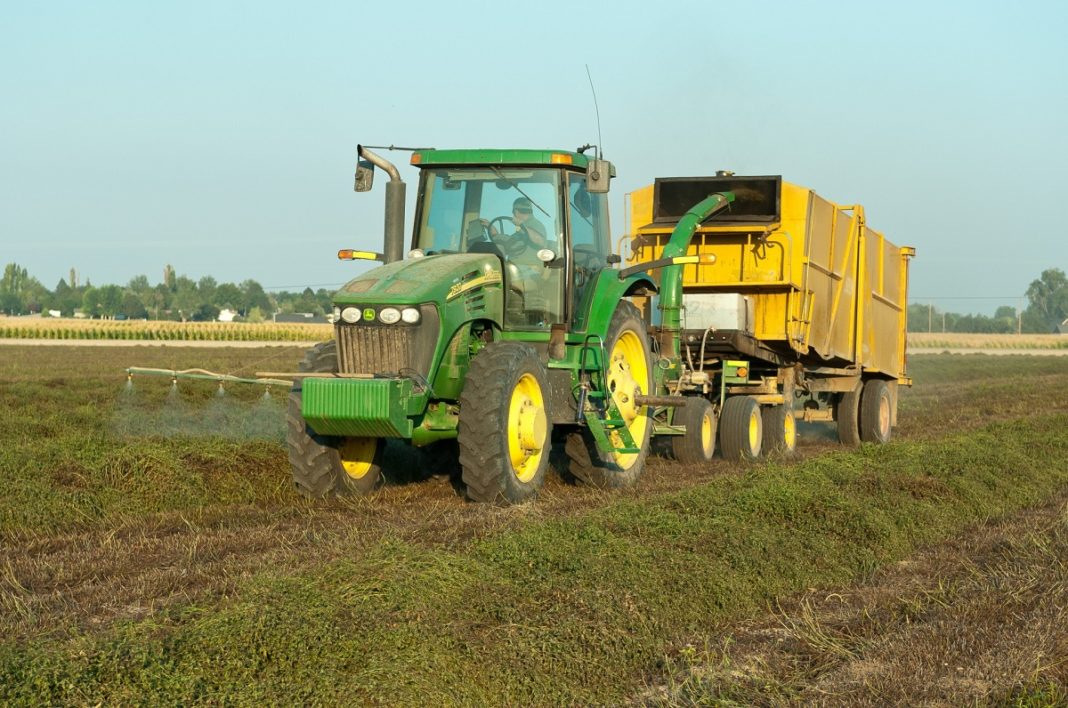In 1903, I.P. Callison started a small “horse and buggy” operation processing cascara bark right here in the Pacific Northwest. From this humble initial start, the company has expanded into other products. In 1941, they purchased W.J. Lake & Co, instantly becoming a supplier and dealer of peppermint oil. Now, Callisons, headquartered in Lacey, is one of the leaders in mint oil production – not just in quantity, but in quality, and innovation.
 Since the beginning, Callisons has been known for innovating whenever possible. For example, in 1916, during World War I, the importation of digitalis and digitoxin used in heart-regulating drugs was halted. Callisons began to process Foxglove leaf, which was the source plant for the drug and happens to grow in abundance in the Northwest. And, in 1952, they brought spearmint production to the Pacific Northwest – helping to skyrocket the spearmint oil production industry from 32,000 pounds to 1.1 million pounds over the next decade.
Since the beginning, Callisons has been known for innovating whenever possible. For example, in 1916, during World War I, the importation of digitalis and digitoxin used in heart-regulating drugs was halted. Callisons began to process Foxglove leaf, which was the source plant for the drug and happens to grow in abundance in the Northwest. And, in 1952, they brought spearmint production to the Pacific Northwest – helping to skyrocket the spearmint oil production industry from 32,000 pounds to 1.1 million pounds over the next decade.
“Our company has always been about innovation and helping our suppliers be successful,” says Justin Biza, marketing manager, at Callisons. “We can’t succeed if they don’t, so our R&D department spends a good amount of resources working on things that can make our suppliers even more productive.” They are members of the Mint Industry Research Council, whose mission is to increase productivity of “a high quality and economical North American mint.”
Innovating Mint Production

Before Callisons can turn the fragrant peppermint or spearmint into flavorful oils, it first has to be grown. Callisons works closely with their growers in North America, India and China. They have their own field managers in each growing region that helps them with the latest improvements and reports back to Callisons regularly.
“We help them develop their best practices, such as the ideal time to harvest to create the best mint oil possible,” says Justin.
This ideal time to harvest (when the mint is fully grown) is critical for getting the best mint. It’s also difficult, because it changes each year depending on the weather – things like rainfall and snowfall. To be as exact as possible, a vice president at Callisons helped develop a scientific algorithm that determines when the crop should be harvested.
“You put historical data from each year into the formula and it says when it’s the ideal time to harvest each mint crop,” Justin explains. “It is really accurate.”
Harvesting Mint for Premium Flavor

When it’s time to harvest, the first step is swathing, where the growers cut down all the mint and place it in “wind rows” out in the field. There, it is left for a few days to dry out. “If you don’t let it dry out enough, you get a bunch of off notes, such as a musty smell,” Justin says.
Next, a tractor arrives, chops up the mint, and blows it directly into a big tub on the vehicle. This tub gets hooked up to the distillation center, which is located on the farm. There, pipes underneath the tub steam the mint. As the steam runs through the leaves, the mint oil evaporates and joins the steam. From there, the steam is pumped into a condenser. A separator then divides the oil from the water, moving the oil into a drum. Some of the spent leaves are spread back onto the field as fertilizer.
Samples are then taken of each drum and sent to Callisons to be thoroughly tested for quality. “We evaluate each sample for color, odor, and then tested using gas chromatography, to determine the chemical make-up,” Justin explains. Sample testing is completed in small batches to avoid overwhelming the testers’ noses.
Callisons buys the full drums of the mint oil that passes their tests, which equates to thousands of drums a year of many varieties of peppermint and spearmint. Once the drum arrives at their Lacey facility, they further refine it into block blends, which are blends of drums from the same region.

The entire process takes almost a full year – something to think about the next time you are enjoying something mint-flavored. When the blends are ready, they are sold to business customers all over the world who use the oil to make almost anything mint-flavored you can think of – from toothpaste and gum to chocolate and baked goods.
One of Callisons newest advancements are flavor crystals. Developed in 2014 by their internal R&D department, the flavor crystals allow for longer-lasting and more intense flavor than mint oil and are commonly being used in gum, chocolate and even baked goods.
The company just opened a full-service facility in China, adding to the facility in Indiana, Chehalis, and Lacey. They are continuing to grow, while staying focused on innovation, including improving sustainability and green practices, not just at their own facilities, but at each grower’s site as well.
For more information, visit Callison’s website.



















































